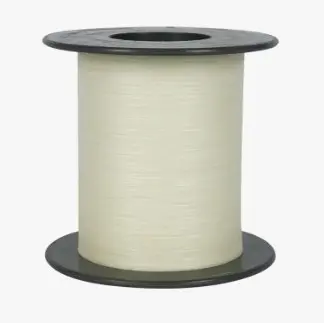Amidst the wave of innovation in the textile industry, fancy yarns, with their unique textures and visual appeal, are becoming a core force driving fabric upgrades. These specialized yarns, which transcend traditional yarn forms, not only offer designers greater creative freedom but are also revolutionizing tactile and aesthetic expression in categories like apparel and home furnishings. From light and flowing feather yarns to dimensional boucle yarns, each fancy yarn embodies the dual DNA of craftsmanship and artistry, imbuing ordinary fabrics with extraordinary vitality.
The Secret Code of Fancy Yarns: From Structural Innovation to Textural Expression
The appeal of fancy yarns stems primarily from their diverse categorization, often based on their structural form and craftsmanship. Core-spun yarns, a common type, utilize a strong fiber core surrounded by a decorative fiber material. This maintains the yarn's durability while creating a soft visual effect through the curl and color variations of the outer fibers. The core and outer layers offer flexible material combinations, allowing the proportions to be adjusted to suit specific needs. This ensures the fabric maintains its stiffness while imparting a delicate velvety or lustrous finish.

Knot yarn is characterized by randomly distributed knots on its surface. These knots are formed through a special twisting process, and their size and spacing can be manipulated to add a dynamic texture to the fabric. The presence of knots disrupts the uniformity of traditional yarns, imparting a natural undulation to the fabric's surface and creating a distinct grainy feel. This is ideal for creating designs with a retro or rustic feel.
Slub yarn is characterized by alternating thick and thin knots along its length. This "slub" effect is achieved by adjusting the draft ratio and twisting speed. Variations in knot length and thickness create a myriad of visual rhythms. The density of the slubs can be either regularly repeated or randomly distributed, creating a rich contrast between light and dark under light and shadow. It is often used to create a rugged texture for denim and casual wear.
Bouquet yarns create a continuous loop structure throughout the yarn, imparting a fluffy feel and unique texture to fabrics. Feather yarns, with their slender, feather-like fibers, add a flowing, dynamic feel and a soft sheen to fabrics. The differences between these categories are reflected not only in their appearance and feel, but also in their suitability for various applications.
From Process to Application: The Extended Value of Fancy Yarns
The emergence of fancy yarns is inseparable from innovations and breakthroughs in textile technology. Their production often requires a combination of specialized spinning equipment and process parameters, controlling the fiber arrangement, twisting method, and composite yarn structure to achieve the desired appearance and performance. For example, some fancy yarns utilize a blend of multi-component fibers, leveraging the strengths of each fiber while creating a unique texture through fiber differences. Some complex fancy yarns require multiple twisting and merging processes to achieve the desired design.
This complexity of the process gives fancy yarns their superior performance and rich expressiveness, leading to their widespread application in various fields. In the apparel industry, fancy yarns are essential elements for creating personalized designs. Whether it's boucle yarn for knitted sweaters or slub yarn for woven fabrics, their unique textures and textures enhance the fashion sense and layering of clothing. In spring and summer, lightweight feather yarns combined with breathable core-spun yarns create a flowing and cool feel. In autumn and winter, heavy knot yarns paired with thermal blended yarns create a cozy and comfortable style.

Fancy yarns also play a vital role in home textiles. Fancy yarns used in home textiles such as curtains and sofa covers not only enhance the decorative effect but also improve the durability and functionality of the fabric through optimized yarn structure. For example, fancy yarns with a certain degree of elasticity used in sofa covers can improve the fabric's stretchability and extend its lifespan. Fancy yarns with a special surface texture used in curtains can create a warm and comfortable indoor atmosphere through the play of light and shadow.
With increasing consumer demand for personalized and high-quality products, the market potential of fancy yarns is continuously being unleashed. It is not only an important carrier of fabric innovation, but also a bridge connecting textile technology and fashion design, driving the entire textile industry to develop in a more creative and valuable direction.

 English
English русский
русский Español
Español











